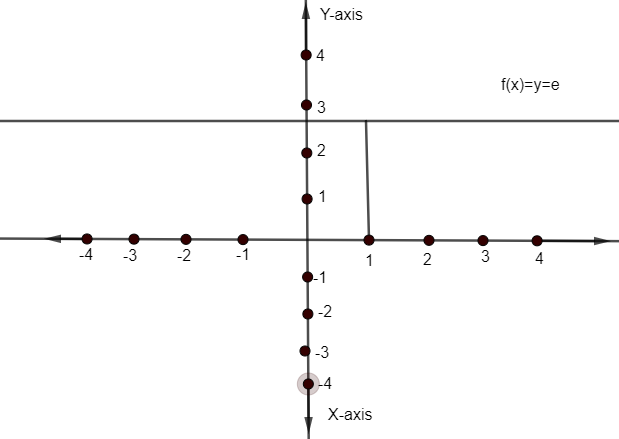Question
Question: The function \(f\left( x \right)={{x}^{\dfrac{1}{\ln x}}}\) A. is a constant function B. has a d...
The function f(x)=xlnx1
A. is a constant function
B. has a domain(0,1)⋃(e,∞)
C. is such that x→1limf(x)
D. is aperiodic
Solution
Hint: First try to simplify the given function f(x)=xlnx1.Then proceeds to the options provided to verify one by one. Here, aperiodic means irregularity.
Complete step-by-step answer:
Here, we have a function given asf(x)=xlnx1……(1).
We need to find correct answer/answers by observing all the options given.
Now, Option A. is given as xlnx1is a constant function.
We can verify this option by just simplifying the function f(x)=xlnx1given in the problem.
We have f(x)=xlnx1
Taking log to both sides, we get
loge(f(x))=loge(x)lnx1……(2)
We know property of log as
logmn=nlogm
So, we can write equation (2) as
loge(f(x))=lnx1loge(x)
Here logex has base ‘e’ and we know that lnx=logex(same value with different representations).
loge(f(x))=1
Now, we know that if
logaN=x, then
N=ax
Hence,loge(f(x))=1, can be written as
f(x)=e′=ef(x)=e
Hence, given function f(x) is ‘e’ i.e. Constant function.
So, Option A is correct.
Now, Coming to option B. i.e. f(x) has a domain(0,1)⋃(e,∞).
To verify option ‘B’, we need to calculate the domain off(x)=xlnx1.
The given function is in volument of ‘lnx’. So, we cannot put negative values to a given function f(x) because the domain of lnx is R+or(0,∞).
We know the value of ln1 is 0. So, lnx1cannot take x=1 as well because 01is not defined.
Hence, domain of (x)lnx1 is(0,1)⋃(e,∞).
So, option B. is not the correct answer.
Now, to verify option ‘C’ i.e. function f(x)=xlnx1 is such that x→1limf(x) exist,
We need to calculate LHL and RHL for x=1 i.e. x→1−andx→1+.
Now, we have already calculated that f(x)=e for the domain(0,1)⋃(e,∞).
So, lnx LHL (x→1−) and RHL (x→1+).
We have constant function ‘e’. So the limit at x→1will exist.
So, option C. is the correct answer.
As (x)lnx1 is simplified to ‘e’.
Hence graph of given function i.e.
f(x)=xlnx1Is given as

Hence, a given function is aperiodic as well where aperiodic means irregularity or not periodic function.
Hence option D. is also correct.
Note: One can go wrong if he/she will not simplify the given relation. As one can think that a given function is written in terms of ‘x’ so how it could be a constant function. So, be careful with these kinds of problems.
One can go wrong with the domain of(x)lnx1. As domain of xais ‘R’ i.e. All real numbers. So, one can get confused with it. So, checking domain for lnx1is the key point for calculation of domain off(x)=xlnx1.
